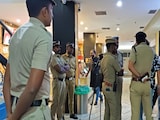Maharashtra is witnessing a sharp rise in Chikungunya cases, even before the onset of monsoon. According to the National Center for Vector Borne Disease Control (NCVBDC), a significant rise in chikungunya infections has been reported, from 473 cases last year to 658 this year in Maharashtra. The state also recorded 2,726 malaria cases up to April 21 this year, dengue cases declined to 1,373 from 1,639.
Chikungunya: Symptoms, prevention and management
Chikungunya is a viral disease that typically spreads during the monsoon. It is transmitted to humans through the bite of infected female mosquitoes, particularly Aedes aegypti and Aedes albopictus. It is more common in tropical and subtropical regions.
Symptoms of chikungunya
Chikungunya causes fever and severe joint pain. Other symptoms include:
- Headache
- Muscle pain
- Rash
- Swelling around the joints
- Fatigue
The symptoms usually appear 4 to 8 days after being bitten by an infected mosquito. While the fever typically lasts a few days, the joint pain can persist for weeks, months or even years in some cases, leading to significant discomfort.
Treatment
Currently, there is no vaccine or antiviral treatment for chikungunya. Treatment largely involves symptom management. If you have been infected with chikungunya, follow these tips for better recovery:
- Stay hydrated: Drink plenty of fluids to help your body recover
- Rest well: Give your body adequate rest for better and quick recovery.
- Pain relief: Chikungunya can be quite painful. Use pain relievers to alleviate joint and muscle pain. However, if you have chikungunya, always consult your doctor before starting any medication.
- Physical therapy: For persistent joint pain, physical therapy may be beneficial to enhance mobility and reduce discomfort.
- Seek medical help: Regular check-ups with a healthcare provider are important for proper and complete recovery.
How to prevent chikungunya
Chikungunya prevention focuses largely on reducing exposure to mosquitoes. Here are some effective strategies:
1. Eliminate breeding areas:
Standing water serves as a breeding ground for mosquitoes. Remove standing water where mosquitoes can breed, such as in flower pots, buckets or old tyres.
2. Use mosquito repellent:
Apply insect repellent containing DEET or other approved ingredients on exposed skin, especially during peak mosquito activity times (early morning and late afternoon).
3. Wear protective clothing:
Long-sleeved shirts and long pants can provide a physical barrier against mosquito bites.
4. Use mosquito nets:
Use mosquito nets, especially in areas with high mosquito populations.
5. Install screens and keep windows, and doors closed:
Make sure windows and doors are fitted with screens to keep mosquitoes outside. Also, keep them shut when not required.
By taking preventive measures and managing symptoms effectively, recovery from Chikungunya can be maximised.
Disclaimer: This content including advice provides generic information only. It is in no way a substitute for a qualified medical opinion. Always consult a specialist or your own doctor for more information. NDTV does not claim responsibility for this information.















